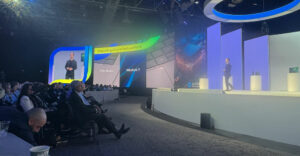
In an announcement that could pique the interest of hard-charging road warriors, HP on Monday claimed that its new HP EliteBook 6930p notebook computer is capable of up to 24 hours of continuous operation on a single battery charge.
By way of perspective, HP offered this scenario: A full day’s worth of battery life means business users can continuously compute on the world’s longest scheduled commercial airline flight — taking off from Newark Liberty International Airport in New Jersey and arriving at Singapore Changi Airport some 19 hours later.
Mobility’s Holy Grail
The accomplishment certainly gives HP bragging rights — for the moment — said Michael Gartenberg, vice president of mobile strategy Jupitermedia.
“Battery life remains the holy grail for mobile computing. It doesn’t matter how good your computer is, once the battery dies, you’re carrying around a brick that weighs a couple of pounds,” he told TechNewsWorld.
Battery life is often looked at as the Achilles’ heel of the mobile device industry. It’s an issue for phones, laptops and just about any other portable gadget. Eventually, Gartenberg said, the mobile hardware industry will have to develop a technology that solves the problem and makes the type of battery longevity HP is touting a ubiquitous part of mobile devices.
“We’re starting to get there. We’re seeing some computers from Lenovo that can run six to eight hours, even nine hours. That’s really the key. It’s not so much running 24 hours on a single charge. There are two measures that have to be hit that we’re getting very close to,” he explained.
The first of Gartenberg’s measures: Can business users make a cross-country flight, have enough juice to power a laptop for the entire trip, and have enough power left at the end to be able to use the computer once they get off the plane? The second: Can the laptop make it through a busy eight- to 10-hour work day?
“The answer is that I can do both of those things today on certain computers, but it still involves trade-offs,” he said, mentioning that users often have to dim their screens and turn off WiFi capabilities in order to preserve power. “What consumers are looking for is, ‘Give me the battery life but don’t make me change my work habits as a result. Let me set the screen brightness the way I want to, maintain the wireless connection if I need to,'” he continued.
The industry is getting very close to hitting that standard, and that’s why the HP announcement is important, according to Gartenberg.
“It gives them the right to claim they are the best. It also shows that they are thinking of these things, and we’ll have to see how this combination of technology, power management and software makes it into other devices as well,” he added.
Powered Up
HP achieved its milestone, it said, as measured by industry standard benchmarks with a 6930p configuration that included an optional ultra-capacity battery.
To lessen the drain on the batteries, HP also used energy-efficient components, including an Intel solid-state drive (SSD) and mercury-free LED (light emitting diode) displays. Intel’s SSD provides as much as a 7 percent increase in battery life as compared with traditional hard disk drives, and the LED monitor boosts battery life by up to 4 hours compared to standard LCD displays, the company said.
“HP can help users get through even strenuous computing needs on a single charge. We’re thrilled that our HP engineering, energy-efficient components — the SSD and Intel chip — and Earth-friendly components — mercury-free LED displays — resulted in this feat,” Robert Baker, business notebook product marketing manager at HP, told TechNewsWorld.
The HP EliteBook 6930p featuring these specific components will be available in October, according to HP. It starts at 4.7 pounds and features a 14.1-inch widescreen display.
“It’s not a small computer. It has a big battery, and you have to add a second big battery to it, but it does mean that you can get all the way to China and it will be working with some battery life to spare. It’s not a cheap option, but if you need that kind of battery life, you’ll pay for it. Cost is not going to be a big inhibitor,” Gartenberg pointed out.




















































